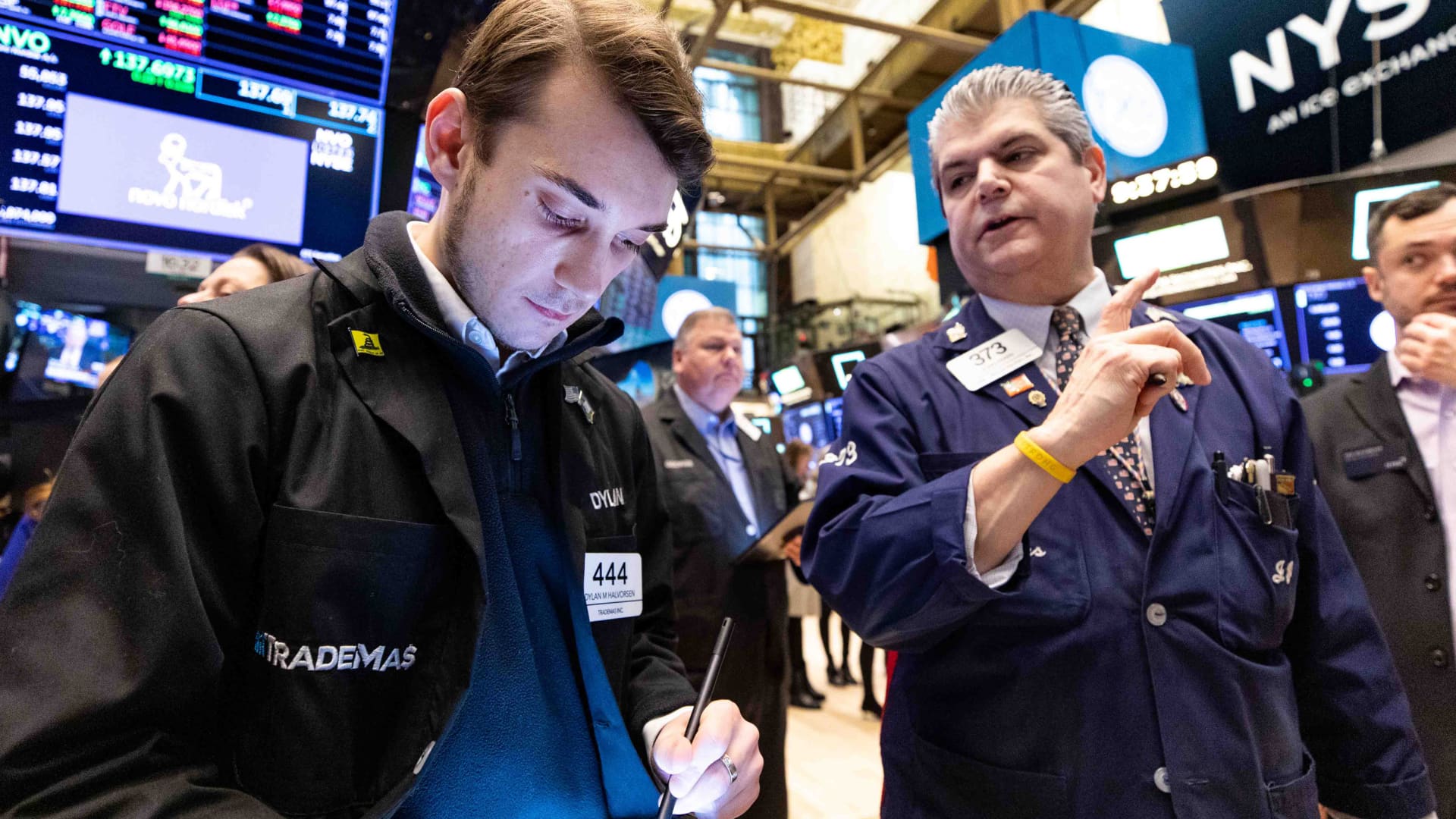Next week is Groundhog Day, not to mention the 30 th anniversary of the theatrical release of “Groundhog Day.” Yet investors are betting they’ll wake up on Thursday freed from the “doom loop” that has entrapped them for a year – the pattern in which every market rally wilts in the shadow of a Federal Reserve determined to throttle risk appetites and repress the economy. The 16% surge in the S & P 500 since the October bear-market low is the strongest since the 18% run that peaked in mid-August, just before Fed Chair Jerome Powell amplified his hawkish rhetoric and promised “pain” in the service of fighting inflation. The ensuing market retreat culminated in the October low at more than a 25% decline from the S & P’s record high. While the symmetry might suggest a “Here we go again” wariness ahead of Wednesday’s Fed policy decision, enough has changed — almost all for the better — to start granting the rally some benefit of the doubt. Inflation is decidedly in retreat, fourth-quarter GDP was slow-ish but solidly positive, Fed officials did nothing to push back against market expectations for a quarter-point bump in rates next week. Positive signposts And from a tape-reading perspective, the rhythm and gait of the early-2023 re-embrace of risk has earned some respect, various indicators showing money is moving with intent and urgency. The broad advance-decline line has been making new cycle highs. Cyclical sectors taking the fore, with steel stocks hitting new highs and credit-card issuers ripping this month on reassuring results and modest loan-loss trends, as the prevailing late-2022 bets on a buckling consumer have not yet been redeemed. All last year, the Fed was tightening into a slowing economy, as bond yields and the dollar were rising and the S & P 500 remained locked in a persistent downtrend even as corporate earnings held at record highs. In recent months, the Fed has appeared nearly done with hikes as the economy shows a bit of traction, bond yields and the dollar have rolled over hard, and the market response to somewhat unimpressive earnings implies the consensus expected worse. As of late last week, the index poked above that pesky and widely watched downtrend line. In the process, the S & P has diverged in a positive direction from the path of the brutal 2007-2009 market meltdown, a doom-loop trajectory that it had been following reasonably closely as of a month or so ago. Such “analog charts” are always for entertainment purposes more than practical guidance, though they offer reminders of how past cycles can rhyme with the present. The market is clearly now also outperforming, to a lesser degree, the 2000-2002 slide – which also originated in an overheated tech mania, low unemployment and a tightening Fed. Clearly things could turn south to reapproach the trajectory of the post-tech-bubble collapse in the early 2000s. But none of the interim S & P 500 rallies in that period made it as far above the 200-day moving average as the index currently is. The market itself, in other words, is acting in a way that builds credence for the plausible but largely disbelieved notion ( as described here two weeks ago ) that the October low will prove durable, the economy should escape a nasty downturn for longer than feared and perhaps an uptrend of consequence is underway. So goes January? While much will be made of January’s claimed power in foretelling how a year will turn out for the market, there have been too many misdirection moves to give this much predictive power. In a more targeted analysis, Steve Deppe of Nerad + Deppe Wealth Management noted on Twitter that the S & P is now on pace for a 10% or greater four-month gain while still being lower over the past 12 months. The nine prior such setups since 1954 were followed by gains every time over the ensuing two to 12 months, with above-average upside and minimal setbacks. Sure, it’s data mining and a limited sample size, but should open minds to what could follow. All of this is impressive, if not decisive. But of course, in markets the next test always awaits. After breaking above that old downtrend line and pressing higher on the fourth straight positive Friday tape is running a bit hot in the short term (see it bumping the upper trend band and the second-highest 14-day relative-strength reading of the past year), though not egregiously overbought. Adam Crisafulli, the founder and strategist at Vital Knowledge, who has been constructive on stocks, wrote to clients on Friday: “The sources of stock support remain in place (strengthening disinflationary forces, reduced monetary overhang, and earnings tailwinds), but the S & P 500’s ceiling is still 4100-4150 (a level that’s right around the corner) and if things keep up at this pace into the Fed, it’s likely the [Feb. 1] decision triggers a ‘sell-the-news’ reaction. As a result, the near-term risk/reward is looking less appealing.” Just above 4100 is the late-November/early-December high, and is the level at which the S & P 500 forward price/earnings ratio would get back to 18, a more demanding level even if it remains inflated by the half-dozen largest stocks and the equal-weight S & P 500 remains below a 16 P/E. Pop in low quality It’s also hard to decipher the market’s authentic macro message from what is also a rather exaggerated version of the usual January effect in which the worst of the prior year’s laggard stocks and lower-quality precincts of the market are reanimated in a new year. The spicy stuff certainly has found more takers lately, with heavily shorted busted speculative fare (Beyond Meat, Opendoor Technologies, the upstart electric-vehicle names) rocketing higher. Overall market posture among investors has become less defensive, with hedge funds adding exposure and fleeing shorts, though the full array of sentiment and positioning data certainly hasn’t crossed into the over-optimistic zone. Deutsche Bank says its consolidated positioning measure shows equity exposure at its highest level since April, but still in the bottom 25% of all readings since 2010. For sure, the leading indicators of a potential recession continue to pulse away on everyone’s screens, from the Treasury yield curve to the Leading Economic Indicators. Most have been reliable, with unpredictable lead times, though are now largely driven by “softer” indicators such as business surveys, consumer expectations and the like. And let’s not forget the stock market was weaker in advance of these signals flaring than it typically has been leading up to past recessions, so it all makes for staticky listening. If the implicit messages of the equity and bond markets are that inflation is last year’s problem, the Fed will pause and perhaps be ready to cut rates not long afterward and corporate earnings won’t collapse, it suggests a good deal must go right to keep stocks supported. Yet even with obligatory macro scares and market switchbacks along the way, it doesn’t mean investors necessarily remain stuck in the same old doom loop.
This website uses cookies so that we can provide you with the best user experience possible. Cookie information is stored in your browser and performs functions such as recognising you when you return to our website and helping our team to understand which sections of the website you find most interesting and useful.





















Discussion about this post